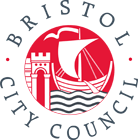City Know-how: Inequity in loneliness and the role of built environment
- 16th February 2023
A study of mid to older adults in Brisbane, found that people living in disadvantaged areas were more likely to be lonely. This was partially explained by levels of residential density.
For the attention of:
General public health and ministers concerned with loneliness internationally including policy makers, urban planners, developers and housing estate designers.
The problem
Although inequity in loneliness has been reported in previous research, little is known about environmental factors. There is a gap in our understanding as few studies have explored the environmental influences of loneliness.
What was done and why
A higher proportion of lonely mid to older adults live in disadvantaged neighbourhoods. The understanding of modifiable environmental factors contributing to the relationship between neighbourhood disadvantage and loneliness is limited. Studies have suggested that having well-connected walkable environments with a mix of land uses, can afford physical and mental health benefits. This is one of the first studies to explore environmental influences of loneliness. Researchers examined whether walkable environments contribute to the relationship between disadvantaged neighbourhoods and loneliness.
What this study adds
This study shows that higher residential density, partly contributed to the observed differences in loneliness across neighbourhood disadvantage, even with adjustment for individual level socio-economic factors.
What this means for city policy and practice
Our results emphasise the importance of residential density as an influence on loneliness, especially in disadvantaged neighbourhoods. We point to the importance of policy, planning and design in terms of reducing levels of loneliness among residence of socio-economically disadvantaged neighbourhoods.
Read the paper
‘Contribution of the built environment to inequity in loneliness by neighbourhood disadvantage in Australia’ by Tara Jamalishahni, Gavin Turrell, Karen Villanueva, Sarah Foster and Melanie Davern in Cities & Health.
About City Know-how
Bristol Health Partners’ SHINE Health Integration Team (HIT) is a network partner for the Cities & Health journal, published by Routledge.
SHINE HIT, which supports healthy and inclusive neighbourhoods for people, publishes regular, bite-sized ‘City Know-How’ updates to help translate research knowledge into policy and practice. Find out more about the City Know-How series.






